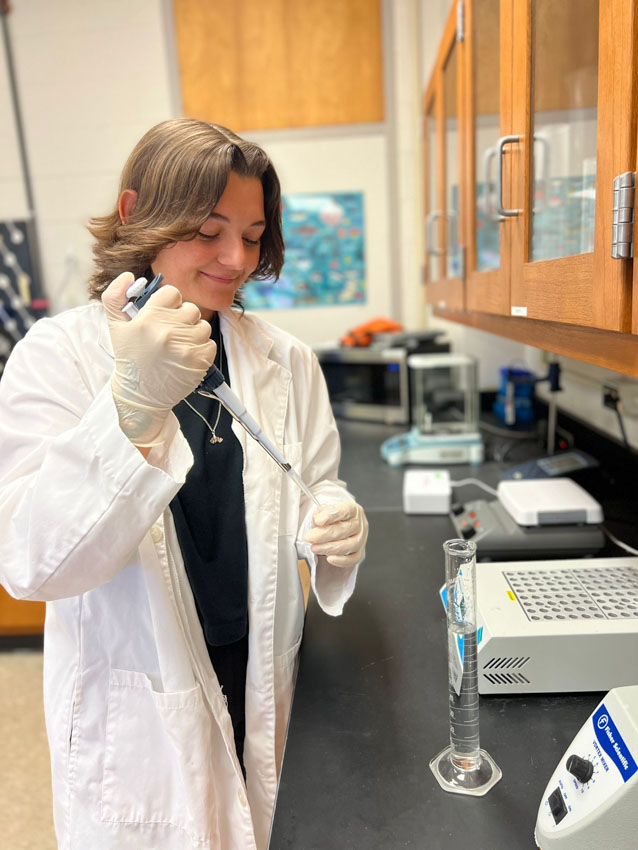USM Researchers Help Confirm Presence of Cownose Rays in Bermuda
Tue, 05/21/2024 - 02:33pm | By: Van Arnold

USM undergraduate student Lauren Coleman helped conduct genetic testing on the cownose ray. (Photo by Emma Humphreys)
Using citizen science, photographs, on-water observations, and the combination of morphological and genetic data, collaborative research provides new evidence that the Atlantic cownose ray (Rhinoptera bonasus) has recently made a new home in Bermuda.
Genetic coding conducted in the lab of Dr. Nicole Phillips, Associate Professor at The University of Southern Mississippi (USM), helped confirm the ray’s presence in Bermudian waters.
“There are three species of cownose ray found in the Atlantic basin, and our role in this project was to use genetic tools to identify which species turned up in Bermuda,” said Phillips.
To identify the species of cownose ray found in Bermuda, Phillips and USM undergraduate student, Lauren Coleman, extracted and sequenced DNA from tissue samples sent to the lab by collaborator, Dr. Matthew Ajemian. Those DNA sequences were then compared to known sequences for the two species found in the western Atlantic.
“The DNA sequences were a 100-percent match for known Rhinoptera bonasus,” said Phillips. “Dr. Ajemian had suspected this, but the genetic data were needed for confirmation as cownose rays tend to be morphologically conserved, which can lead to misidentifications in the field.”

Researchers from Florida Atlantic University’s Harbor Branch Oceanographic Institute served as the lead Principal Investigator on the project. In addition to USM, other collaborators included the Department of Environmental and Natural Resources, St. George Bermuda; the Natural History Museum; the Bermuda Aquarium, Museum and Zoo; and the National Marine Fisheries Service.
Because cownose rays are highly migratory and prefer tropical and temperate seas, they are typically restricted to continental shelves. Bermuda, located in the northwest region of the Sargasso Sea, is separated from the continental mainland United State by about 1,000 kilometers.
Results of the study, published in the journal Frontiers in Fish Science, confirms the species as R. bonasus and show that after hundreds of years of natural history records, this represents a novel migration of Atlantic cownose rays to Bermuda, a group of oceanic islands and circular-like coral reefs. Currently, it is unknown whether this species in Bermuda is a full-time resident or a season visitor. Based on the islands’ mild sea temperatures and remoteness, the study suggests that cownose rays will likely reside in Bermuda for extended periods.
Findings from the study suggest that cownose rays have been in Bermuda for more than a decade since 2012 and observations of the species continue to be sustained today.
Ajemian noted, “If cownose rays continue to survive in Bermuda waters, the species’ low fertility rate of one pup per year will limit its capacity for rapid population growth, which is why we greatly need a more accurate assessment of the current population size.”